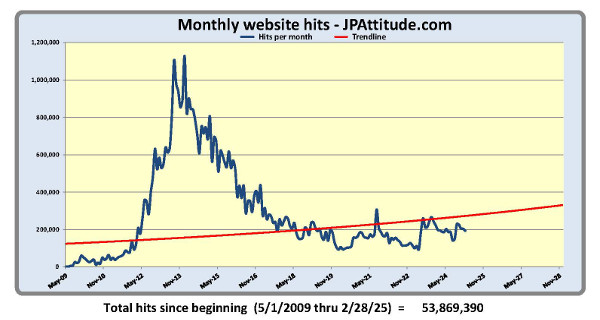Swine flu and the prisoner’s dilemma
January 26, 2011
 Getting vaccinated against swine flu isn’t rational and I can prove it with your favorite television cop show. What’s more, I don’t even need to know which one is your favorite.
Getting vaccinated against swine flu isn’t rational and I can prove it with your favorite television cop show. What’s more, I don’t even need to know which one is your favorite.No, I’m not Carnac the Magnificent and this isn’t a magic trick. All cop shows rely on a classic problem from the branch of applied mathematics called Game Theory. The math problem is called The Prisoner’s Dilemma and works like this: the cops take a suspect into a room and offer him a deal if he rats on his buddy.
Simple as that.
Doesn’t sound like math is involved, I know, but in fact mathematicians go nuts over this problem. Doctoral theses have been written, computer algorithms designed, Nobel prizes won, Martian invasions thwarted, you name it. This thing is big stuff on the egghead lecture circuit.
The decision matrix for a basic prisoner’s dilemma looks like this:

Here’s what the matrix tells us: if you are Prisoner A, no matter what Prisoner B does you are better off ratting on him; and if you are Prisoner B, no matter what you’re better off ratting on Prisoner A. You might say that ratting is the most rational decision. In fact, linguistically, the root of the word “rational” is “rat” which comes from the Latin… okay, okay, I’m making that part up but it is an interesting coincidence.
On television, the bad guys always end up talking, either because the writers need the show to end in 60 minutes or because thugs are math wizards. One or the other.
Game Theory applies to vaccines, too. Replace the word “prisoner” with the word “patient” and make it about the choice between getting vaccinated or not getting vaccinated. The math says when the risk of dying from the disease is low compared to the risk of being harmed by the vaccine itself, the rational decision is to avoid the damn vaccine.
The Prisoner’s Dilemma arises because the best decision you can make for yourself—usually—is to avoid the vaccine while everybody else gets vaccinated. That way you avoid the risk of the vaccine but still don’t catch the disease because nobody else has the disease for you to catch it from. The decision depends on risk factors and vaccination rates, and with some vaccines you might need a mathematician to determine the best strategy, but when it comes to swine flu the answer is obvious: the risk from the disease is so low it’s unquestionably, utterly, and unbelievably stupid to get vaccinated.
A whole lot of people seem to understand that. Even medical personnel, presumably the most knowledgeable healthcare consumers, are refusing to participate. After last year’s flu season they surveyed California healthcare workers and barely half of them were vaccinated against swine flu. In New York, they tried to mandate that all healthcare workers be vaccinated and almost had a riot on their hands. Nurse and public employee unions took the state to court and won a restraining order against the mandate. And it’s not just nurses and support staff—surveys from around the country show that doctors are even less enthused about getting this vaccination.
If the professionals don’t like it, what does that tell you?
Here are some revealing facts which help explain the antipathy toward swine flu vaccine:
1. Last year, Australia, where the flu season precedes ours by six months, predicted 10,000-20,000 deaths from swine flu—yet only 185 people actually died.In a given year, your odds of catching swine flu and dying from it are less than one thousandth of one percent. The odds are greater that you will die from heart disease, cancer, stroke, accidental injury, motor vehicle accident, suicide, falling down, assault by firearm, fire or smoke, electrocution, drowning, airplane crash, flood, legal execution, tornado, lightning, snake/bee/other venom, earthquake, or dog attack—in that order.
2. Unpersuaded by Australia’s experience, the U.S. predicted 90,000-300,000 swine flu deaths—actual deaths are unknown because the Center for Disease Control and Prevention (CDC), embarrassed by the lack of a noteworthy epidemic, simply stopped counting. It’s estimated that less than 2,000 people died. That’s compared to 35,000-40,000 deaths every year from regular flu.
3. Regular seasonal flu kills between one in 480 and one in 1,700 Americans infected—swine flu killed only one person for every 5,000 infected… at the most. Because swine flu is more contagious, less likely to be fatal, and provides residual immunity to regular flu, it tends to “crowd out” regular flu and thereby save lives. You know: sort of like a free, natural vaccine.
4. The World Health Organization (WHO) predicted 50 to 120 million deaths worldwide—less than 15,000 actually occurred. Compare that to almost a million deaths every year from malaria to gain a sense of perspective.
It is true that you are more likely to die from swine flu than from getting hit by an asteroid, but barely.
Given the facts, why did governments around the world make such a big deal about swine flu last year? And given how anticlimactic the disease ended up being, why are they trying to make a big deal about it again this year?
The answer is money. (Surprise, surprise.) Vaccines produce huge profits for pharmaceutical companies and they spend big money buying influence. Here in the U.S., the pharmaceutical industry has contributed hundreds of millions of dollars to politicians over the past decade and then in 2009 they made a special deal with Barack Obama to support his healthcare legislation. The payoff from Democrats included special exemptions from the new healthcare laws, Obama reneging on his promise to let Americans buy prescription drugs from foreign countries, and the federal government spending oodles of taxpayer money to market swine flu vaccine. Which is why the CDC sounds more like Proctor & Gamble selling toothpaste than scientists talking about an epidemic.
But wait, there were other payoffs, too: in 2009 the Obama administration gave the pharmaceutical industry a blank check to produce 250,000,000 doses of swine flu vaccine and allowed them to skip safety testing and exempted them from lawsuits.
Wait, there was even more payoff: the U.S. government gave Novartis Pharmaceuticals Corporation $700 million to build a vaccine plant in North Carolina, in return for which the U.S. gets the right to purchase vaccines for 17 years. How’s that for a deal? Taxpayers build the factory, Novartis gets the profits.
If somebody offered you $700 million to build a factory from which you get to keep the profits, how fast would you cash that check? Before the ink dried? Me too.
2009 sales for swine flu vaccine shots were in the range of $6-8 billion at GlaxoSmithKline, $2-3 billion at Novartis, and $1-2 billion at Sanofi-Aventis; not exactly chump change. And sales would have been even higher if the vaccine manufacturers hadn’t run into production problems. Pushing toothpaste as hard as they could, the CDC recommended two doses of swine flu vaccine per person in August of 2009. That was back when they thought there would be 250,000,000 doses available, which is a lot of toothpaste to sell. Then manufacturers ran into production problems. In September, aware of those problems, the government suddenly lowered their recommendation to one dose per person. By December, as vaccine shortages became chronic, the CDC had conveniently decided Hey, we think half a dose per person is sufficient to protect you from swine flu! By the way, y’all are going to pay the same amount for that half dose as you used to pay for the whole dose. Have a nice day.
Show of hands: who thinks the CDC is basing vaccine recommendations on science and who thinks they’re basing recommendations on what pharmaceutical companies want?
Swine flu propaganda is more than merely dishonest—it’s also dangerous. The vaccines these drug dealers are pushing can cause serious complications. People have died. There’s a reason why the pharmaceutical companies wanted exemption from lawsuits: all vaccines carry a certain amount of danger and there’s evidence that swine flu vaccines carry more than most. The Internet is full of stories from women who miscarried immediately after getting the swine flu vaccine, and reports of children having seizures, and government officials in the UK recently admitted that studies have detected “somewhat elevated rates” of Guillain-Barre syndrome which can cause paralysis and death; and Bell's palsy, a temporary facial paralysis; and thrombocytopenia, which is a low level of blood platelets.
But hey, don’t worry, here in the U.S. the Health and Human Services Department's National Vaccine Advisory Committee, sister agency to the CDC, is currently investigating those complications. They’ve got your back.
Oh, by the way, swine flu vaccine often contains the mercury-based preservative thimerosal, which should be enough, all by itself, to give you pause. Between thimerosal-preserved swine flu vaccine and federally-mandated mercury-filled light bulbs, it feels like the United States government is waging chemical warfare against its own citizens.
On the bright side, these are probably boom times for mercury producers.
The implication of the swine flu vaccine scam—really, what else can reasonable people call it?—is that government-run healthcare is a disaster in the making, sure to cause endless amounts of waste, suffering, and death. The government has no more ability to make honest science-based decisions about people’s health than it has to make sound financial decisions.
The harsh reality is this: self-serving government bureaucrats, eager to please a favored constituency with big pockets, were willing to hard-sell dangerous mercury-infused vaccines to pregnant women and children in order to combat a disease that was never a serious threat.
The swine flu scam is the harbinger of what Obamacare has in store for healthcare in general.
From Reno, Nevada, USA
January 26, 2011 - Last year after the flu season I read about the European Union issuing reports accusing WHO of exaggerating the swine flu problem and being in bed with pharmaceutical companies. There were threats of an investigation, indignant denials by the U.N. That's the last I heard. As usual with government, the graft gets swept under the rug and ignored. - C.J., New York













